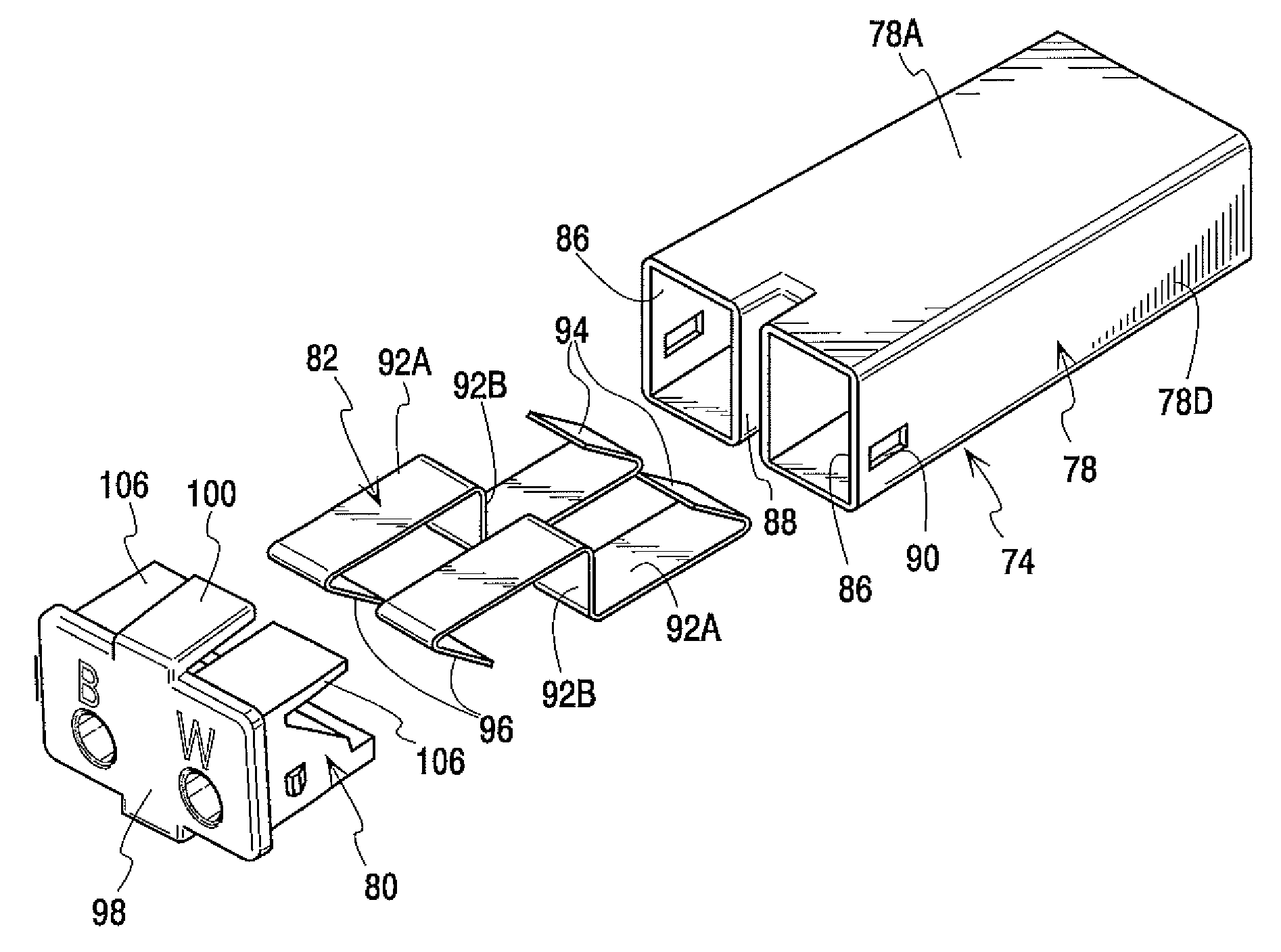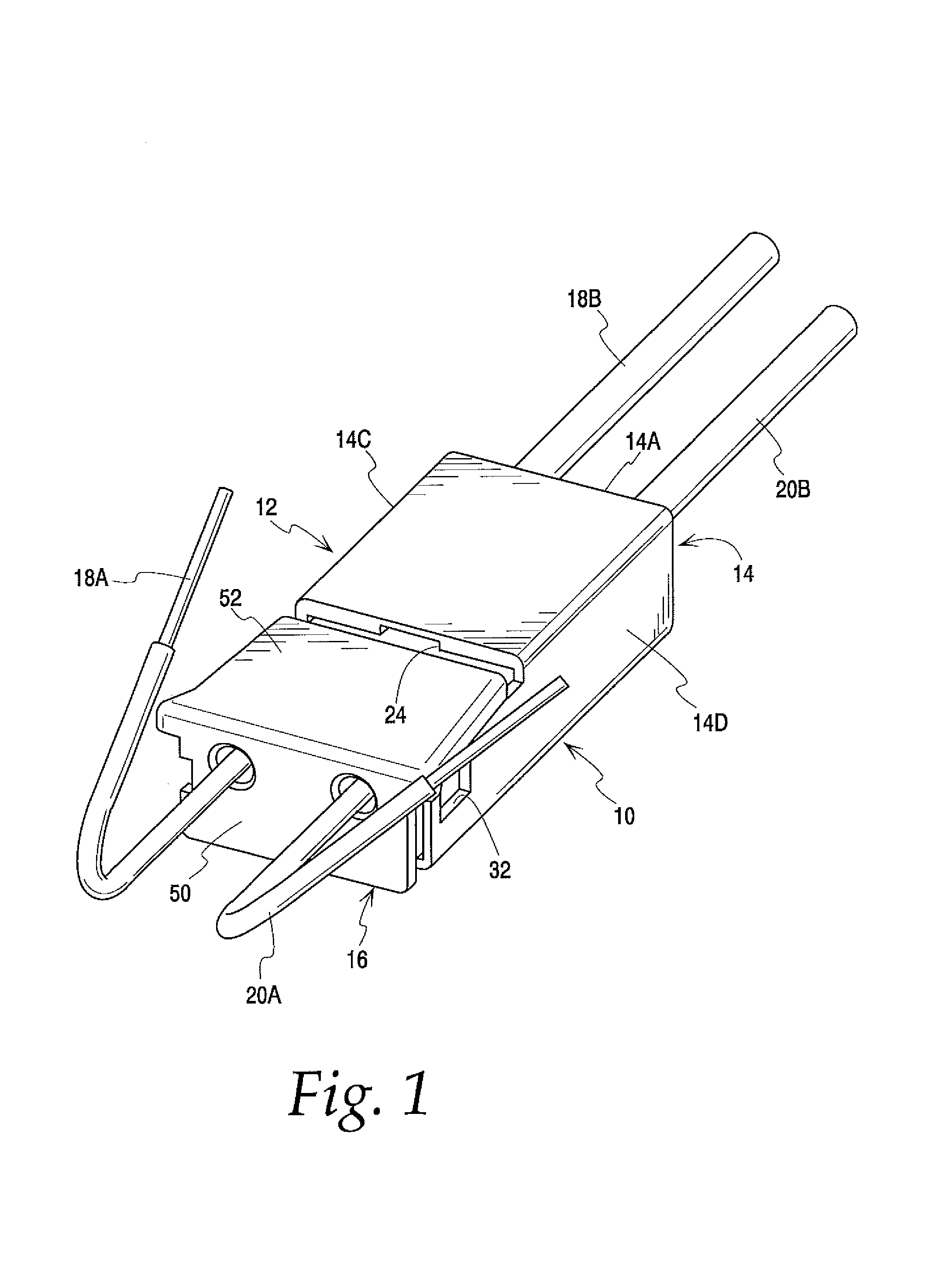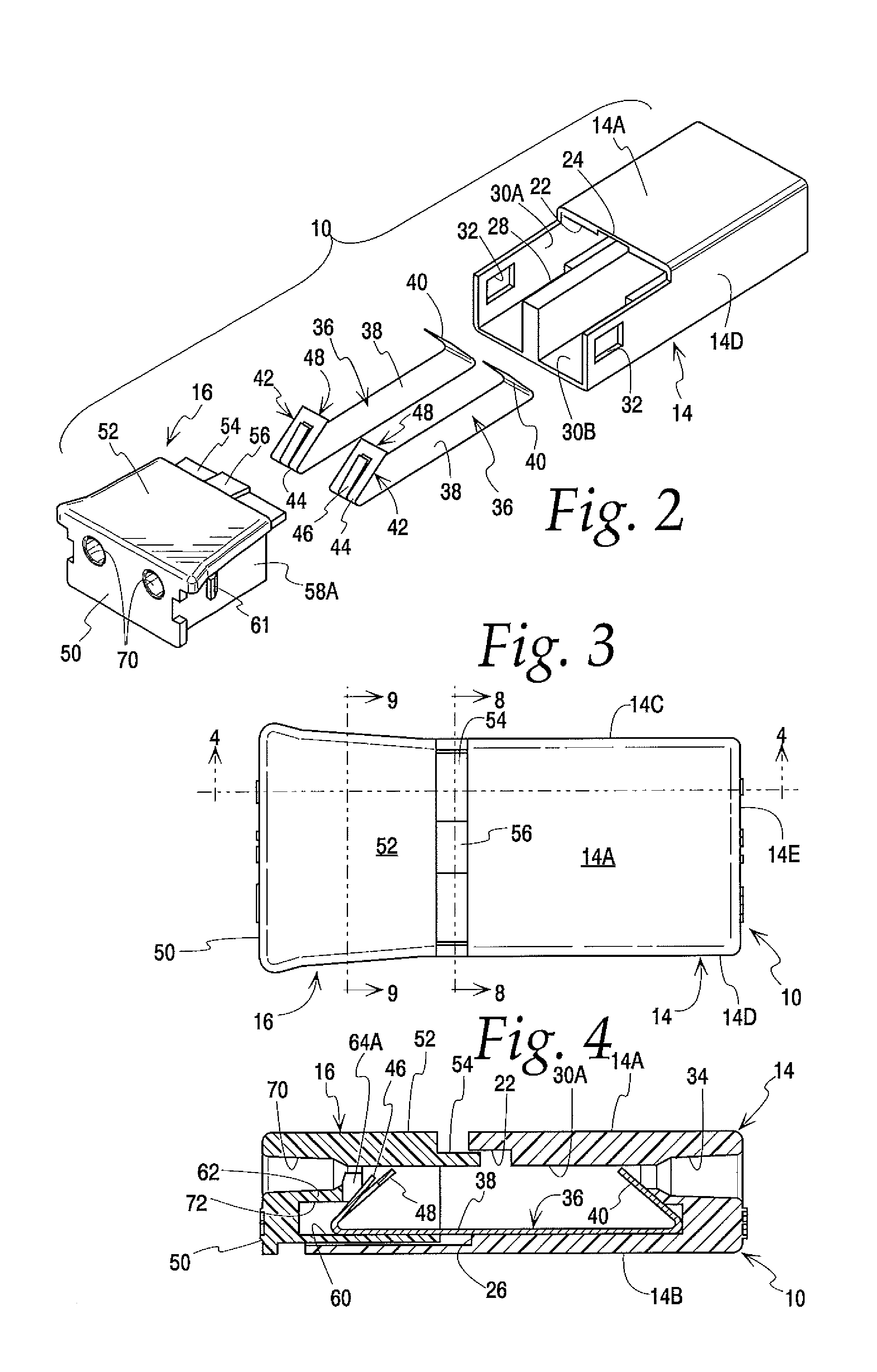Releasable wire connector
a technology of releasable wires and connectors, which is applied in the direction of contact members penetrating/cutting insulation/cable strands, instruments, peptides/protein ingredients, etc., can solve the problems of arcing of connector contacts, circuit elements failing and needing replacement, and relatively time-consuming procedures
- Summary
- Abstract
- Description
- Claims
- Application Information
AI Technical Summary
Benefits of technology
Problems solved by technology
Method used
Image
Examples
Embodiment Construction
[0033]FIG. 1 illustrates the wire connector of the present invention generally at 10. The wire connector joins pairs of wires in an in-line configuration with push-in connections. That is, the ends of wires to be connected have their insulation stripped to expose bare conductors. The bare conductors are pushed into the connector 10. A contact in the connector engages the conductors and provides a conductive path between them.
[0034]The connector has a generally hollow enclosure 12. The enclosure includes a housing 14 and a cap 16. The cap is slidably mounted on the housing between actuated and retracted positions. The cap is shown in FIG. 1 in the retracted position. The interior of the cap includes a release block which will be described in detail below. Pairs of wires 18A, 18B and 20A, 20B are shown in FIG. 1 installed in the connector 10.
[0035]Details of the housing are shown in FIGS. 1 and 2. The housing includes top and bottom walls 14A and 14B. These are joined by side walls 14...
PUM
| Property | Measurement | Unit |
|---|---|---|
| angle | aaaaa | aaaaa |
| angle | aaaaa | aaaaa |
| flexible | aaaaa | aaaaa |
Abstract
Description
Claims
Application Information
 Login to View More
Login to View More - R&D
- Intellectual Property
- Life Sciences
- Materials
- Tech Scout
- Unparalleled Data Quality
- Higher Quality Content
- 60% Fewer Hallucinations
Browse by: Latest US Patents, China's latest patents, Technical Efficacy Thesaurus, Application Domain, Technology Topic, Popular Technical Reports.
© 2025 PatSnap. All rights reserved.Legal|Privacy policy|Modern Slavery Act Transparency Statement|Sitemap|About US| Contact US: help@patsnap.com



